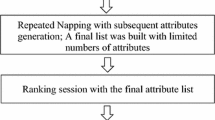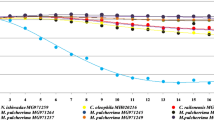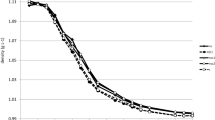Abstract
Mixed inoculation of non-Saccharomyces yeasts and S. cerevisiae is of interest for the wine industry for technological and sensory reasons. We have analysed how mixed inocula of the main non-Saccharomyces yeasts and S. cerevisiae affect fermentation performance, nitrogen consumption and volatile compound production in a natural Macabeo grape must. Sterile must was fermented in triplicates and under the following six conditions: three pure cultures of S. cerevisiae, Hanseniaspora uvarum and Candida zemplinina and the mixtures of H. uvarum:S. cerevisiae (90:10), C. zemplinina:S. cerevisiae (90:10) and H. uvarum:C. zemplinina:S. cerevisiae (45:45:10). The presence of non-Saccharomyces yeasts slowed down the fermentations and produced higher levels of glycerol and acetic acid. Only the pure H. uvarum fermentations were unable to finish. Mixed fermentations consumed more of the available amino acids and were more complex and thus better able to synthesise volatile compounds. However, the amount of acetic acid was well above the admissible levels and compromises the immediate application of mixed cultures.


Similar content being viewed by others
References
Ribereau-Gayon P, Dubourdieu D, Donèche B, Lonvaud A (eds) (2000) Cytology, taxonomy and ecology of grape and wine yeast. In: Handbook of enology, vol 1. Wiley, West Sussex, pp 1–49
Fleet GH, Heard GM (1993) Yeasts growth during fermentation. In: Fleet GH (ed) Wine microbiology and biotechnology. Harwood Academic Publishers, Chur, pp 27–54
Beltran G, Torija MJ, Novo M, Ferrer N, Poblet M, Guillamón JM, Rozès N, Mas A (2002) Analysis of yeast populations during alcoholic fermentation: a six year follow-up study. Syst Appl Microbiol 25:287–293
Fleet GH (2008) Wine yeast for the future. FEMS Yeast Res 8:979–995
Sipiczki M, Ciani M, Csoma H (2005) Taxonomic reclassification of Candida stellata DBVPG 3827. Folia Microbiol 50:494–498
Hierro N, González A, Mas A, Guillamón JM (2006) Diversity and evolution of non-Saccharomyces yeast populations during wine fermentations: effect of grape ripeness and cold maceration. FEMS Yeast Res 6:102–111
Hierro N, Esteve-Zarzoso B, Mas A, Guillamón JM (2007) Monitoring of Saccharomyces and Hanseniaspora populations during alcoholic fermentation by real-time quantitative PCR. FEMS Yeast Res 7:1340–1349
Andorrà I, Landi S, Mas A, Guillamón JM, Esteve-Zarzoso B (2008) Effect of oenological practices on microbial population using culture independent techniques. Food Microbiol 25:849–856
Esteve-Zarzoso B, Gostíncar A, Bobet R, Uruburu F, Querol A (2000) Selection and molecular characterization of wine yeasts isolates from the “El Penedès” area (Spain). Food Microbiol 17:553–562
Fleet GH (2003) Yeast interaction and wine flavour. Int J Food Microbiol 86:87–99
Viana F, Gil JV, Genovés S, Vallés S, Manzanares P (2008) Rational selection of non-Saccharomyces wine yeast for mixed starters based on ester formation and enological traits. Food Microbiol 25:778–785
Fernandez MT, Ubeda JF, Briones AI (1999) Comparative study of non-Saccharomyces microflora of musts in fermentation, by physiological and molecular methods. FEMS Microbiol Lett 173:223–229
Charoenchai C, Fleet GH, Henschke PA, Todd BEN (1997) Screening of non-Saccharomyces wine yeasts for the presence of extracellular hydrolytic enzymes. Aust J Grape Wine Res 3:2–8
Mills DA, Johannsen EA, Cocolin L (2002) Yeast diversity and persistence in botrytis-affected wine fermentations. Appl Environ Microbiol 68:4884–4893
Antunovics Z, Csoma H, Sipiczki M (2003) Molecular and genetic analysis of the yeast flora of botrytized Tokaj wines. Bull OIV 76:380–397
Clemente-Jimenez JM, Mingronance-Cazorla L, Martínez-Rodríguez S, Las Heras-Vázquez FJ, Rodríguez-Vico F (2004) Molecular characterization and oneological properties of wine yeasts isolated during spontaneous fermentation of six varieties of grape must. Food Microbiol 21:149–155
Divol B, Lonvaud-Funel A (2005) Evidence for viable but nonculturable yeasts in botrytis-affected wine. J Appl Microbiol 99:85–93
Hierro N, Esteve-Zarzoso B, González A, Mas A, Guillamón JM (2006) Real-time quantitative PCR (QPCR) and reverse transcription-QPCR for detection and enumeration of total yeasts in wine. Appl Environ Microbiol 72:7148–7155
Ciani M, Ferraro L (1998) Combined use of immobilized Candida stellata cells and Saccharomyces cerevisiae to improve the quality of wines. J Appl Microbiol 85:247–254
Soden A, Francis IL, Oakey H, Henschke PA (2000) Effects of co-fermentation with Candida stellata and Saccharomyces cerevisiae on the aroma and composition of Chardonnay wine. Aust J Grape Wine Res 6:21–30
Llauradó JM, Rozés N, Bobet R, Mas A, Constantí M (2002) Low temperature alcoholic fermentation in high sugar concentration grape must. J Food Sci 67:268–273
Ciani M, Ferraro L (1996) Enhanced glycerol content in wines made with immobilized Candida stellata cells. Appl Environ Microbiol 62:128–132
Ciani M, Maccarelli F (1998) Oenological properties of non-Saccharomyces yeasts associated with winemaking. World J Microbiol Biotechnol 14:199–203
Jemec KP, Raspor P (2005) Initial Saccharomyces cerevisiae concentration in single or composite cultures dictates bioprocess kinetics. Food Microbiol 22:293–300
Csoma H, Sipiczki M (2008) Taxonomic reclassification of Candida stellata strains reveals frequent occurrence of Candida zemplinina in wine fermentation. FEMS Yeast Res 8:328–336
Sipiczki M (2003) Candida zemplinina sp. Nov., an osmotolerant and psychrotolerant yeast that ferments sweet botrytied wines. Int J Syst Evol Microbiol 53:2079–2083
Sipiczki M (2004) Species identification and comparative molecular and physiological analysis of Candida zemplinina and Candida stellata. J Basic Microb 44:471–479
Ciani M, Beco L, Comitini F (2006) Fermentation behaviour and metabolic interactions of multistarter wine yeast fermentations. Int J Food Microbiol 108:239–245
Moreira N, Mendes F, Hogg T, Vasconcelos I (2005) Alcohols, esters and heavy sulphur compounds production by pure and mixed cultures of apiculate wine yeast. Int J Food Microbiol 103:285–294
Angelo J, Siebert KJ (1987) A new medium for the detection of wild strains in brewing culture yeast. J Am Soc Brew Chem 45:135–140
Aerny J (1996) Composés azotés des moûts et vins. Rev Suisse Vitic Arboric Hortic 28:161–165
Beltran G, Novo M, Rozès N, Mas A, Guillamón JM (2004) Nitrogen catabolite repression in Saccharomyces cerevisiae during wine fermentations. FEMS Yeast Res 4:625–632
Ortega C, López R, Cacho J, Ferreira V (2001) Fast analysis of important wine volatile compounds development and validation of a new method based on gas chromatographic-flame ionisation detection analysis of dichloromethane microextracts. J Chromatogr A 923:205–214
Garde-Cerdán T, Ancín-Azpilicueta C (2006) Contribution of wild yeasts to the formation of volatile compounds in inoculated wine fermentations. Eur Food Res Technol 222:15–25
Pretorius I (2000) Tailoring wine yeast for the new millennium: novel approaches to the ancient art of winemaking. Yeast 16:675–729
Ciani M, Pepe V (2002) The influence of pre-fermentative practices on the dominance of inoculated yeast starter under industrial conditions. J Sci Food Agr 82:573–578
Nissen P, Arneborg N (2003) Characterization of early deaths of non-Saccharomyces yeasts in mixed cultures with Saccharomyces cerevisiae. Arch Microbiol 180:257–263
Nissen P, Nielsen D, Arneborg N (2003) Saccharomyces cerevisiae cells at high concentrations cause early growth arrest of non-Saccharomyces yeasts in mixed cultures by a cell-cell contact-mediated mechanism. Yeast 20:331–341
Arneborg N, Siegumfeldt H, Andersen G, Nissen P, Daria V, Rodrigo P, Glückstad J (2005) Interactive optical trapping shows that confinement is a determinant of growth in a mixed yeast. FEMS Microbiol Lett 245:155–159
Pérez-Nevado F, Albergaria H, Hogg T, Girio F (2006) Cellular death of two non-Saccharomyces wine-related yeasts during mixed fermentation with Saccharomyces cerevisiae. Int J Food Microbiol 108:336–345
Bisson LF (1999) Stuck and sluggish fermentations. Am J Enol Vitic 50:107–119
Hernawan T, Fleet GH (1995) Chemical and cytological changes during the autolysis of yeasts. J Ind Microbiol 14:440–450
Mendoza LM, Manca de Nadra MC, Farías ME (2007) Kinetics and metabolic behavior of a composite culture of Kloeckera apiculata and Saccharomyces cerevisiae wine related strains. Biotechnol Lett 29:1057–1063
Beltran G, Esteve-Zarzoso B, Rozès N, Mas A, Guillamón JM (2005) Influence on the timing of nitrogen additions during synthetic grape must fermentations on fermentation kinetics and nitrogen consumption. J Agric Food Chem 53:996–1002
Swiegers JH, Bartowsky EJ, Henschke PA, Pretorius IS (2005) Yeast and bacterial modulation of wine aroma and flavour. Aust J Grape Wine Res 11:127–138
Rapp A, Versini G (1991) Influence of nitrogen compounds in grapes on aroma compounds of wine. In: Seattle WA, Rantz J (eds) Proceedings of the international symposium on nitrogen in grapes and wines. American Society for Enology and Viticulture, Davis, CA, p 15664
Capece A, Fiore C, Maraz A, Romano P (2005) Molecular and technological approaches to evaluate strain biodiversity in Hanseniaspora uvarum of wine origin. J Appl Microbiol 98:136–144
Beltran G, Novo M, Guillamón JM, Mas A, Rozès N (2008) Effect of fermentation temperature and culture media on the yeast lipid composition and wine volatile compounds. Int J Food Microbiol 121:169–177
Acknowledgments
The present work has been financed by the projects AGL2007-66417-C02-02/ALI and AGL2007-65498-C02-02/ALI of the Spanish Ministry of Education and Science. The authors thank the Language Service of the Rovira i Virgili University for revising the manuscript.
Author information
Authors and Affiliations
Corresponding author
Rights and permissions
About this article
Cite this article
Andorrà, I., Berradre, M., Rozès, N. et al. Effect of pure and mixed cultures of the main wine yeast species on grape must fermentations. Eur Food Res Technol 231, 215–224 (2010). https://doi.org/10.1007/s00217-010-1272-0
Received:
Revised:
Accepted:
Published:
Issue Date:
DOI: https://doi.org/10.1007/s00217-010-1272-0




